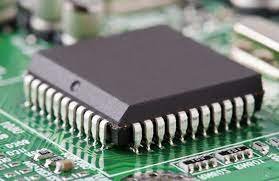In today’s era, advanced science and technology must be the mainstream and direction of development, but also the inevitable product of the development of the times.
Only by firmly grasping advanced technology, can we lead forward, can we endure, can we go to the world. The chip, semiconductor, and integrated circuit is a kind of high-tech product, it occupies almost every aspect of our lives. Everything from children’s toys and light fixtures to computers, televisions, cars, refrigeration, aeroplanes, ships, robots, and more, has to do with integrated circuits.
Chip
A chip, also known as a microcircuit, a microchip, or an integrated circuit (IC), is a small piece of silicon containing an integrated circuit, often part of a computer or other electronic device.
Chip (Chip) is the general name of semiconductor components and is the carrier of integrated circuits (IC), divided by the wafer.
A silicon wafer is a small piece of silicon-containing integrated circuits that are part of a computer or other electronic device.
Semiconductor
Before we talk about semiconductors, let’s go back to our knowledge of conductors and insulators
1. Conductor
A conductor is a substance that has a small resistivity and conducts electric current easily. The existence of a large number of free-moving charged particles in a conductor is called a carrier. Under the action of the external electric field, the carrier makes the directional movement and forms the obvious electric current. Metals are the most common type of conductor.
The valence electrons in the outermost layers of a metal atom easily break free of the nucleus and become free electrons, leaving behind positive ions (atomic realizations) that form a regular lattice.
The concentration of free electrons in metals is high, so the conductivity of metal conductors is usually greater than that of other conductor materials. The resistivity of metal conductors generally decreases with temperature. At extremely low temperatures, the resistivity of some metals and alloys will disappear and be transformed into”Superconductors”.

2 .Insulators
An insulator is a substance that does not normally conduct an electric current. Also known as a dielectric. The characteristic of insulators is that the positive and negative charges in the molecule are tightly bound, there are very few charged particles that can move freely, and their resistivity is very high, about 10-10 ohm · m, therefore, in general, the macroscopic current caused by the free charge movement under the action of an external electric field can be ignored, and considered as a non-conductive material.
Insulators can be classified into three types: gaseous (e.g. hydrogen, oxygen, nitrogen, and all gases in a non-ionizing state), liquid (e.g. pure water, oil, paint, and organic acids), and solid (e.g. glass, ceramics, rubber, paper, quartz, etc.).
3. Semiconductors
A semiconductor is a material that conducts electricity between a conductor and an insulator at room temperature. It is a material whose conductivity is controllable, ranging from an insulator to a conductor.
We usually refer to materials with poor electrical conductivity, such as coal, artificial crystals, amber, ceramics, and so on as insulators. And the electrical conductivity of relatively good metals such as gold, silver, copper, iron, tin, aluminium, and so-called conductor. You can simply call a material between a conductor and an insulator a semiconductor.
Applications of semiconductors
From the perspective of science and technology and economic development, semiconductors affect people’s daily work and live. Compared with conductors and insulators, List of semiconductor materials were the latest to be discovered, and it wasn’t until the 1930s, when refining techniques for materials improved, that the existence of semiconductors was truly recognized by the academic community.
Semiconductors in integrated circuits, consumer electronics, communication systems, photovoltaic power generation, lighting, high-power power conversion, and other fields have applications, such as diodes made of semiconductor devices.
A semiconductor whose conductivity is easily controlled and can be used as a component material for information processing. Semiconductors are very important in terms of technology or economic development. The core unit of many electronic products, such as computers, mobile phones, and digital recorders, uses changes in the conductivity of semiconductors to process information.
Common List of semiconductor materials include silicon and germanium of the first generation, gallium arsenide and indium phosphide of the second generation, gallium nitride and silicon carbide of the third generation, and silicon is one of the Lists of semiconductor materials, one of the most influential in business applications.
Semiconductor mainly consists of four components: integrated circuit (integrated circuit), optoelectronic devices, discrete devices, and sensors, because integrated circuits and devices accounted for more than 80% of the share, semiconductors and integrated circuits are often equated.
According to the types of products, integrated circuits can be divided into four categories: microprocessors, memory, logic devices, and analogue devices. We usually call them chips.
Integrated circuits can integrate analogue and digital circuits on a single chip to make devices such as Analog-to-digital converters and digital-to-analogue converters. This circuit provides a smaller size and lower cost.
Usually what we call a chip is what we see as a fingernail-sized black box, which is packaged. Inside the black box is a die, die is an integrated circuit, inside by lithography engraved integrated circuit, can be considered semiconductor > integrated circuit = chip

Integrated circuit
An integrated circuit is a miniature electronic device or component. Using a certain process, the necessary transistors, resistors, capacitors, inductors, and other components and wiring in a circuit are interlinked together to produce a small piece or several small semiconductor chips or dielectric substrates, it is then encapsulated in a tube shell to form a microstructure with the required circuit functions;
All the components are structurally integrated, making the electronic component a big step towards miniaturization, low power consumption, intelligence, and high reliability. It is represented in the circuit by the letter”IC”.
The inventors of integrated circuits were Jake Killby (integrated circuits based on germanium (GE)) and Robert Noyce (integrated circuits based on silicon (Si)). The majority of applications in the semiconductor industry today are silicon-based integrated circuits.
Integrated circuits are a new type of semiconductor device developed in the late 1950s and 1960s. It is a semiconductor manufacturing process by oxidation, photolithography, diffusion, epitaxy, steaming aluminium, etc., the semiconductors, resistors, capacitors, and the connecting wires between them are all integrated into a small piece of silicon, and then the electronic devices are welded and sealed in a tube shell. The packaging shell has a round shell, flat or double-in-line, and other forms.
IC technology includes chip manufacturing technology and design technology, mainly reflected in processing equipment, processing technology, packaging and testing, mass production, and design of innovative capabilities.
What’s the difference between a chip and an integrated circuit?
The emphasis is different.
A chip is a chip, usually a square piece of material with many small feet that you can see with your naked eye, or a square piece that you can’t see with your feet. However, chips also include a variety of chips, such as baseband, voltage conversion, and so on.
Processor more emphasis on function refers to the implementation of the processing unit, which can be said to be MCU, CPU, and so on.
The range of integrated circuits is much wider. If you integrate some resistor-capacitor diodes, it’s an integrated circuit. It could be an analogue signal conversion chip, or it could be a logic control chip, but on the whole, the concept is more of a bottom-up thing.
The integrated circuit is a kind of case electronic circuit, which consists of active components, passive components, and their interconnections, and is fabricated on a semiconductor substrate or insulating substrate. It can be divided into semiconductor integrated circuits, film integrated circuits, and hybrid integrated circuits three main branches.
Chip (Chip) is the general name of semiconductor components and is the carrier of integrated circuits (IC), divided by the wafer.
What is the relationship and difference between semiconductor integrated circuits and semiconductor chips?
A chip is an abbreviation for an integrated circuit, but the real meaning of the word “Chip” is the Integrated circuit packaging semiconductor chip, or die, inside the chip. Strictly speaking, chips and integrated circuits can not be interchanged. The integrated circuit is through semiconductor technology, thin-film technology, and thick film technology manufacturing, where certain functions of the circuit miniaturization done in a certain package of circuit form, can be called an integrated circuit. A semiconductor is a material between a good conductor and a bad conductor (or insulator).
The semiconductor integrated circuit includes the semiconductor chip and the peripheral related circuit.
Semiconductor integrated circuit
A semiconductor integrated circuit is a transistor, diode and other active components and resistors, capacitors, and other passive components, under a certain circuit interconnection, “Integrated” on a semiconductor single chip, to perform a specific circuit or system function.

Semiconductor chips
Etching, wiring, and making functional semiconductor devices on a semiconductor sheet. Not just silicon chips, but also a common List of semiconductor materials such as gallium arsenide (which is toxic, so don’t be too curious about breaking it down on some shoddy circuit boards) and germanium.
Semiconductors also have trends like cars. In the 1970s, companies such as Intel have the upper hand in the dynamic random access memory (D-RAM-RRB- market.
But in the 1980s, with the advent of large computers and the need for high-performance D-RAM, Japanese companies came out on top.
According to international, domestic, and industry standards, the chip failure analysis laboratory can carry out the detection work from the bottom chip to the actual product, from the physical to the logical comprehensive detection work, it provides chip preprocessing, side-channel attack, light attack, intrusion attack, environment, voltage burr attack, electromagnetic injection, radiation injection, physical security, logic security, function, compatibility, and multi-point laser injection security detection services.
At the same time, it can simulate and reproduce the failure phenomenon of intelligent products, find out the failure cause of failure analysis and detection services, it mainly includes the test of Probe Station, Rie, Emmi, X-ray, FIB, and so on. It can be used to test the Reactive-ion etching. To realize the evaluation and analysis of the quality of intelligent products, providing quality assurance for the chips, embedded software, and applications of intelligent equipment products.
In short, a semiconductor is a general term for a class of materials. An integrated circuit is a large collection of circuits made of a List of semiconductor materials. A chip is a product of different types of integrated circuits or a single type of integrated circuit
If you want to know more about Electronic Component consultation, please feel free to consult: www. enetcl.com





